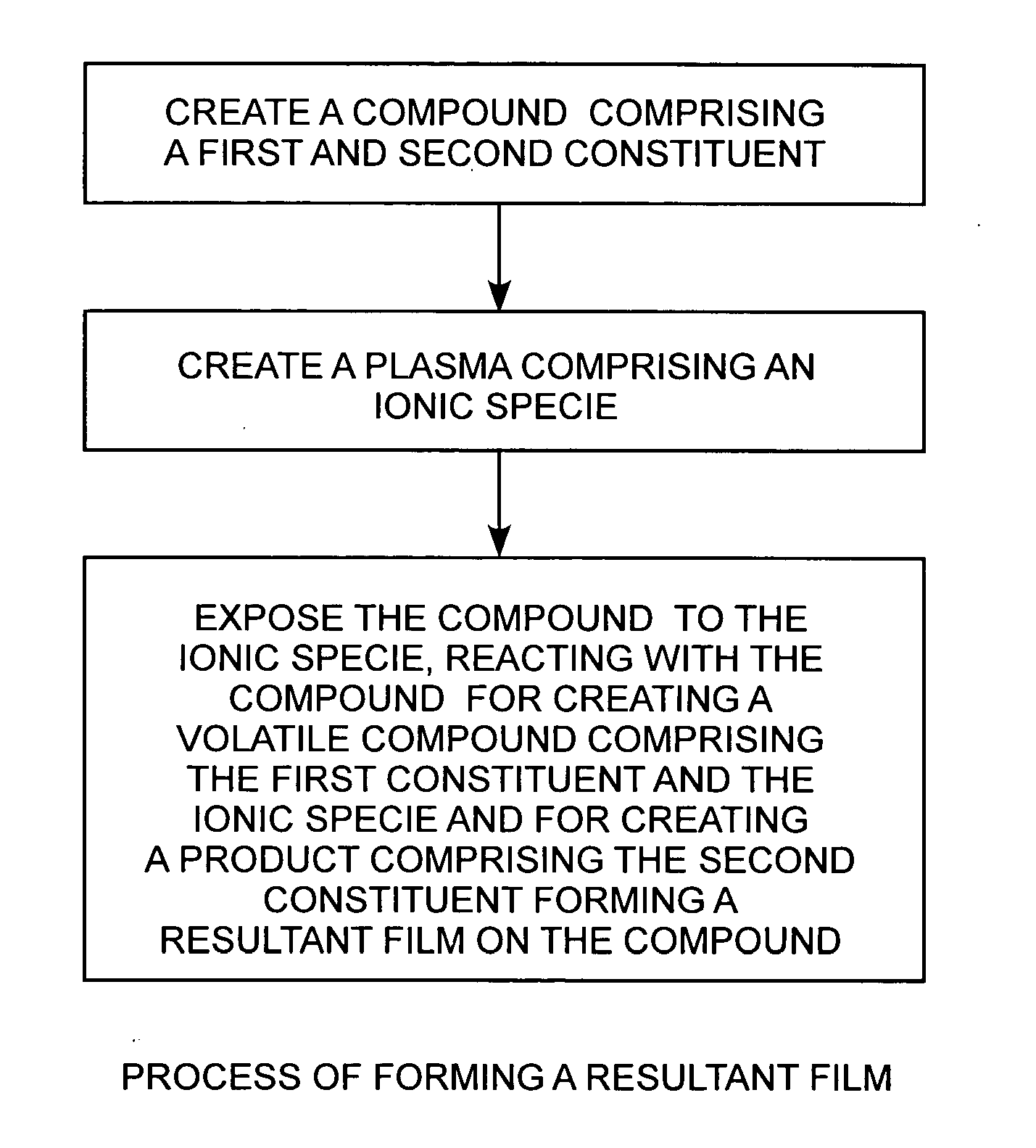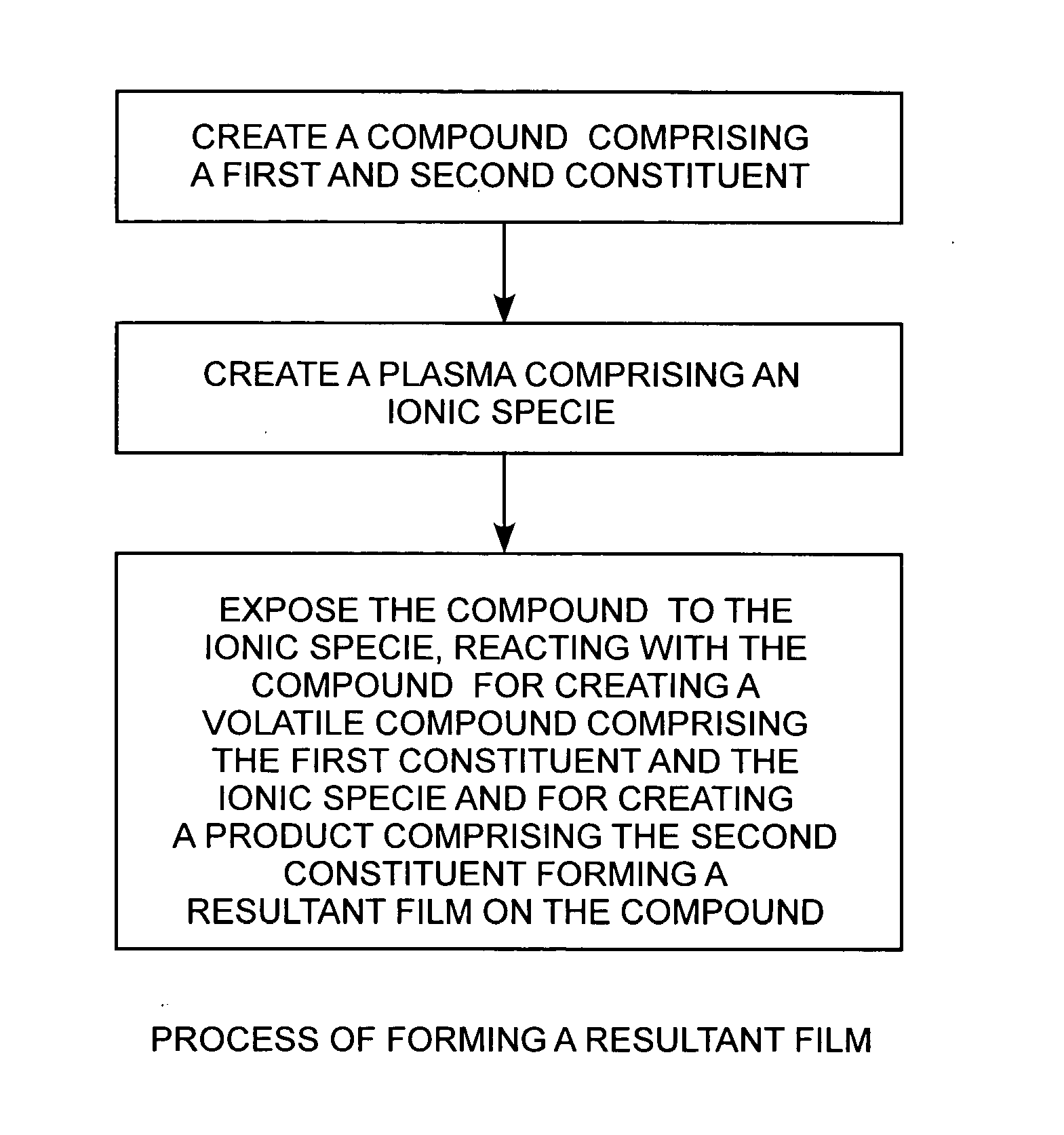Method for producing carbon surface films by plasma exposure of a carbide compound
a carbide compound and surface film technology, applied in the field of semiconductor processing methods, can solve the problems of high temperature and significant long time use the difficulty of protecting silicon, and the inability of standard photolithographic mask materials to withstand the high temperature employed in the chlorination process. achieve the effect of low friction and better control
- Summary
- Abstract
- Description
- Claims
- Application Information
AI Technical Summary
Benefits of technology
Problems solved by technology
Method used
Image
Examples
Embodiment Construction
[0013] An embodiment of the invention is described with reference to the drawing. The method comprises three essential steps including creating a compound comprising a first and second constituent, creating a plasma comprising an ionic specie, and exposing the compound to the ionic specie that reacts with the compound for creating a volatile compound comprising the first constituent and the ionic specie and for creating a product comprising the second constituent forming a resultant film on the compound. In the preferred form, the compound in titanium carbide (TiC), the ionic species with chloride Cl−, the volatile compound with titanium tetrachloride (TiCl4) and the resultant film is a surface film of carbon (C). The compound can be either bulk or thin film material.
[0014] The form of the method is generic and can be applied to any metal carbide, such as TiC, SiC, WC, TaC, ZrC, VC, HfC, Nbc, SeC2, MO2C. Commercially available TiC sputter targets (such as from ESPI) can be employed...
PUM
| Property | Measurement | Unit |
|---|---|---|
| power | aaaaa | aaaaa |
| sliding distance | aaaaa | aaaaa |
| volatile | aaaaa | aaaaa |
Abstract
Description
Claims
Application Information
 Login to View More
Login to View More - R&D
- Intellectual Property
- Life Sciences
- Materials
- Tech Scout
- Unparalleled Data Quality
- Higher Quality Content
- 60% Fewer Hallucinations
Browse by: Latest US Patents, China's latest patents, Technical Efficacy Thesaurus, Application Domain, Technology Topic, Popular Technical Reports.
© 2025 PatSnap. All rights reserved.Legal|Privacy policy|Modern Slavery Act Transparency Statement|Sitemap|About US| Contact US: help@patsnap.com


